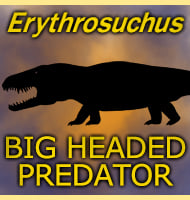Triopticus
In Depth At the time of the genus description very little is known about Triopticus. Only known from a partially preserved braincase, we don’t know the size of Triopticus, what it ate, or even what kind of creature it was other than just giving it the tentatively cautious title of being an archosauriform. What we … Read more
